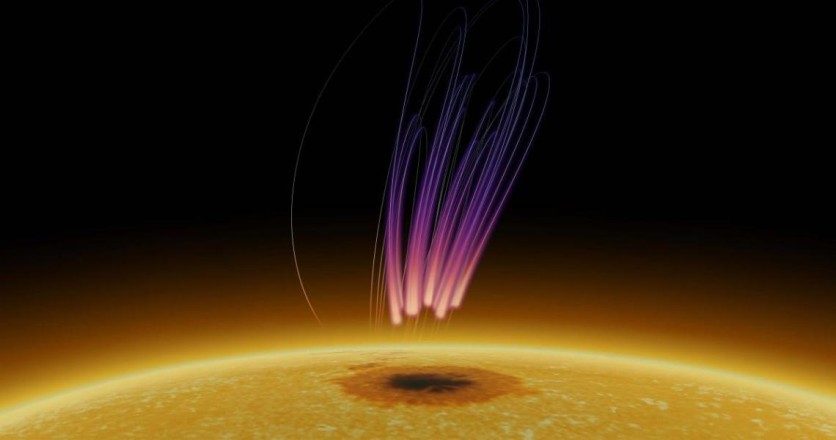A group of astronomers from the New Jersey Institute of Technology's Center for Solar-Terrestrial Research (NJIT-CSTR) has reported the discovery of a unique radio phenomenon resembling an aurora occurring 40,000 km above a sunspot, a relatively dark and cold area on the sun's surface.
The radio observations, conducted using broadband dynamic radio imaging spectroscopy from the Karl G. Jansky Very Large Array, revealed an extended polarized radio burst, lasting over a week and emanating from a sunspot.
This discovery challenges the typical transient nature of solar radio bursts that usually endure for only minutes or hours.

Auroral Radio Emissions
Lead author and NJIT-CSTR scientist Sijie Yu emphasized the distinctive features of these radio emissions, likening them to auroral radio emissions seen in planetary magnetospheres around Earth, Jupiter, Saturn, and certain low-mass stars.
This finding provides valuable insights into the origin of intense solar radio bursts and opens up possibilities for understanding similar phenomena in distant stars hosting large starspots.
Unlike the well-known solar radio noise storms, their duration and polarization characterize the newly observed emissions. The researchers suggest that these emissions are related to the electron-cyclotron maser (ECM) process, involving energetic electrons confined within converging magnetic field configurations in sunspots.
This magnetic environment, similar to the magnetic polar caps of planets and other stars, creates conditions favorable for ECM emission.
Interestingly, the emissions occur at much higher frequencies, ranging from hundreds of thousands to approximately one million kHz, a direct consequence of the sunspot's magnetic field strength being thousands of times greater than Earth's.
The study indicates that these radio bursts are not closely tied to the timing of solar flares but are influenced by sporadic flare activity in nearby active regions.
"Cosmic Lighthouse Effect"
Rohit Sharma, a scientist from the University of Applied Sciences Northwestern Switzerland and co-author of the study, explains that sporadic flare activity appears to inject energetic electrons into large-scale magnetic field loops anchored at the sunspot, driving the ECM radio emission.
Describing the phenomenon as a "sunspot radio aurora," Yu suggests that it exhibits rotational modulation synchronized with the sun's rotation, resulting in a "cosmic lighthouse effect."
The researchers plan to conduct a retrospective analysis to determine if previously recorded solar bursts could be instances of this newly identified emission.
Although the solar radio emissions identified are less potent than standard auroral emissions, the resemblance to stellar auroral emissions witnessed previously suggests that starspots on colder stars, similar to sunspots, may serve as origins for certain radio bursts observed in diverse stellar settings.
The findings contribute to understanding the interaction between energetic particles and magnetic fields in systems with long-lasting starspots. The link between solar behavior and magnetic activities in other stars could prompt a reassessment of current models of stellar magnetic activity, impacting astrophysics research.
The findings of the team were published in the journal Nature Astronomy.
Related Article: New Computer Simulation Sheds Light on Early Galaxy Formation Aligned With NASA James Webb's Observations

ⓒ 2025 TECHTIMES.com All rights reserved. Do not reproduce without permission.




